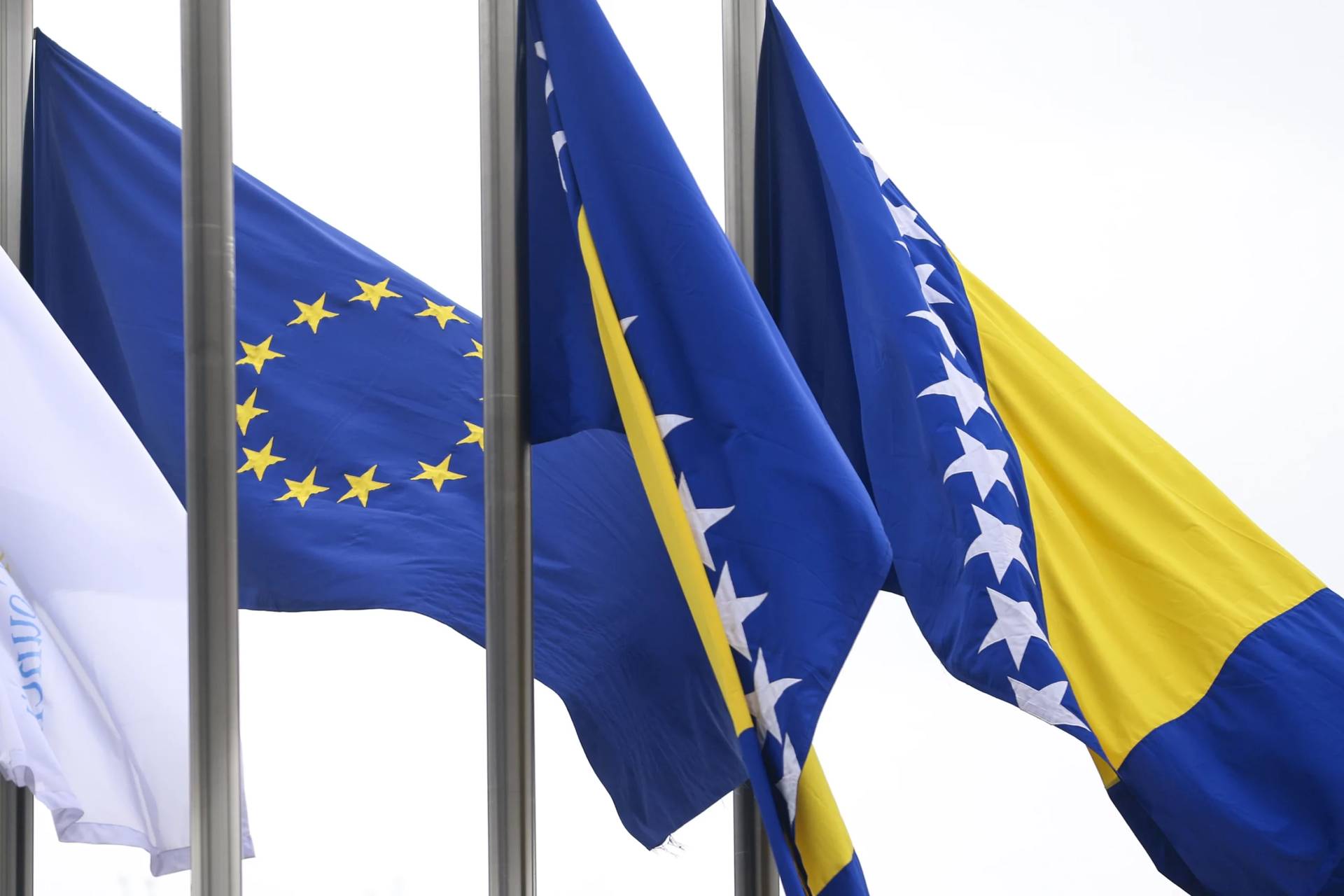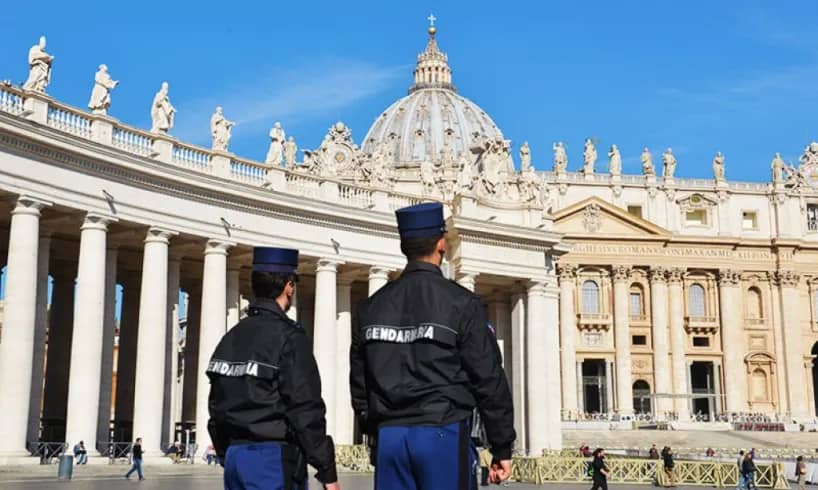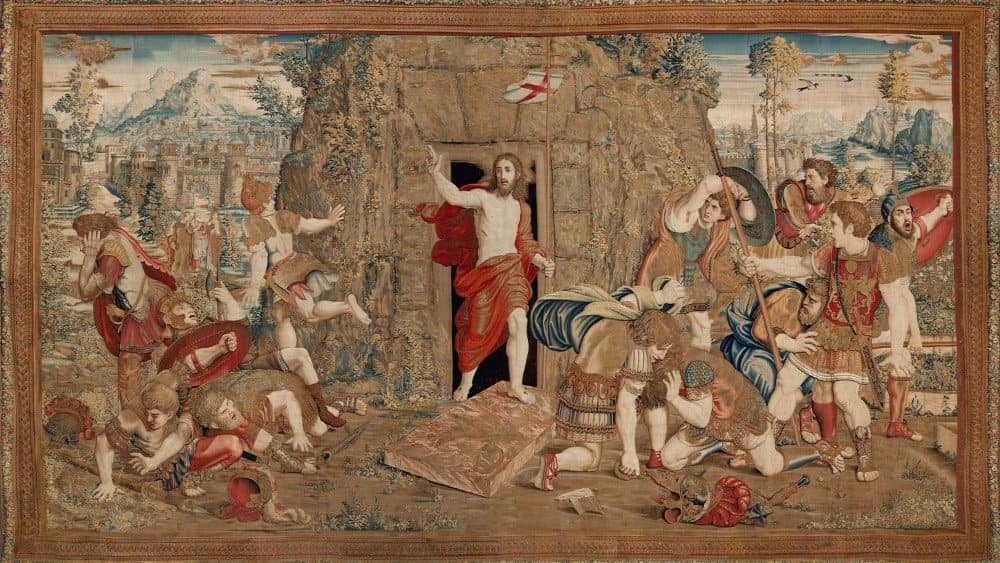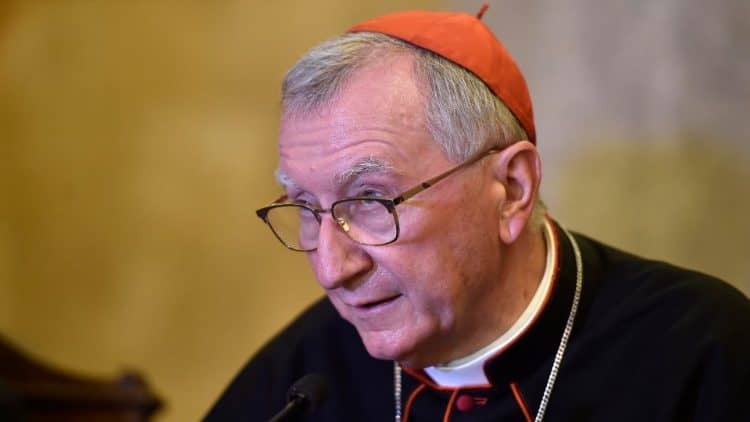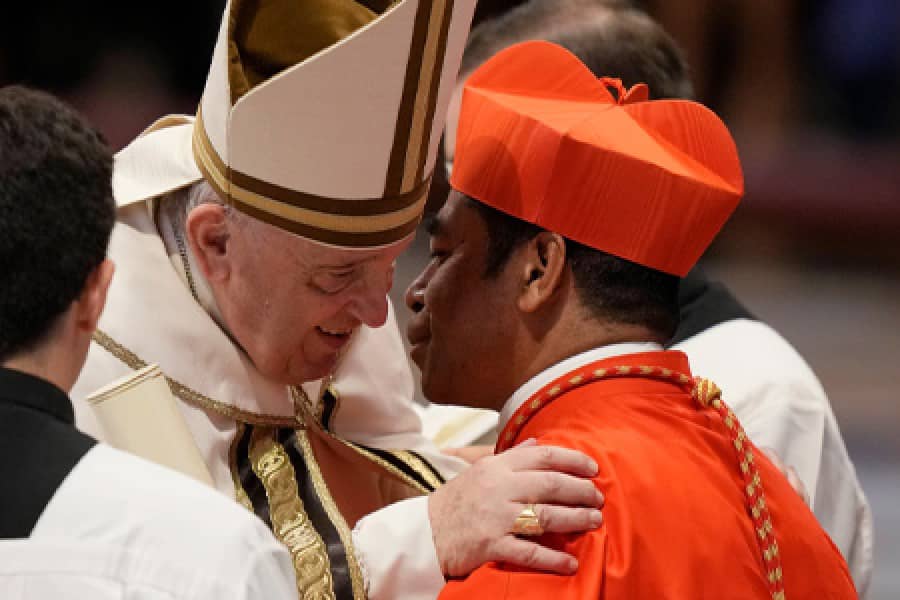Father Paul Lahpai Awng Dang, 46, grew up witnessing how violence overshadowed ethnic-majority Kachin state in northern Myanmar, just across from China’s Yunnan province.
For years, the area has been part of a battleground for the Myanmar military and ethnic Kachin rebels, who allegedly have backing from their allies in China for their armed struggle for an independent Kachin homeland. But today, Dang worries less about the spillover of armed conflict and is focused on his parish.
“Our mission is faith formation, education and the China mission, which prioritizes pastoral care for the ethnic Kachin in Yunnan province,” Dang told ucanews.com.
The priest takes care of about 3,000 mostly Kachin Catholics in 587 households in Panghkak Parish, part of Banmaw Diocese.
Banmaw, about 500 miles from Yangon, sits on the banks of the Irrawaddy River, a lush green mountainous region known as a hot spot for teak logging, wooden houses and tourism.
A major pastoral priority of Panghkak Parish is to offer humanitarian support to the thousands of displaced people living in seven camps within the radius of the parish; parish workers collaborate with the Catholic charity Karuna (Caritas).
Dang said the parish also runs a boarding school for students from grades five to 10 and a mission in China, although both projects were affected by the COVID-19 pandemic.
“There is a growing number of Catholics in China’s Yunnan province, as many ethnic Kachin have converted from animism. Catechists serve the community, and we provide pastoral and social care for them. We have direct communication with them,” he said.
“We continue to travel from one place to another amid strict restrictions,” Dang said.
Dang, Panghkak Parish and Banmaw Diocese bear the legacy of Western missionaries, especially the Columbans, who evangelized in the area and cemented the foundation of the Catholic Church.
Dang said he was baptized by a Columban missionary in a community dominated by Baptists. “The Bible inspired me to choose priestly life,” he said.
Nearby Pangkat village, located on highlands just five miles from the China-Myanmar border, is the birthplace of Bishop Raymond Sumlut Gam, the first prelate of Banmaw Diocese.
Gam, a son of farmers, became a priest encouraged by Irish Columban Father James Fitzpatrick, who served as a local parish priest. The missionary paid for the young boy to join a seminary in Yangon.
Fitzpatrick arrived in the area in 1946 at the age of 33. He was part of a band of 12 Columban missionaries to arrive in what was then known as Burma.
In what is now Banmaw Diocese, Fitzpatrick worked to serve about 1,000 Catholics who lived up and down the hills, requiring him to undertake long treks and pony rides to offer spiritual and pastoral services. Poor health due to tuberculosis and high blood pressure constantly bothered him. He died in 1963.
Gam said that, during his childhood, he was afraid to meet and greet Columban missionaries because he saw them as strange people having a different skin tone and speaking an unusual language. But “they prioritized evangelization among the Kachin people and transformed their lives through Christian education,” Gam told ucanews.com.
Gam recalled an old saying that the Columbans had watered the plants of faith in Kachin, where missionaries from the Paris Foreign Mission Society had sown the seeds in the 19th century.
The first footprints of Catholicism were marked in 1856 when French Bishop Paul Bigandet visited the northern region of Burma, including Myitkyina, the Kachin state capital. In 1873, three Paris Foreign Mission Society priests arrived to carry out missionary activities.
The extreme weather, including scorching heat, made the mission extremely difficult. In three decades until 1901, 14 priests either died or returned home in poor health due to malaria.
The arrival of the Columbans from Ireland in 1936 gave new impetus to the mission, eventually spreading all over Kachin state.
By the 1950s, Burma was known as one of the richest countries in Asia, exporting rice, jade, gold, rubber and teak.
Things collapsed after the 1962 military takeover. Beginning in 1965, Gen. Ne Win nationalized all schools and hospitals, and in 1966, he ordered the expulsion of all missionaries who arrived after 1948. Such moves, coupled with military rule and a long-running ethnic insurgency, made a once-prosperous nation one of the poorest in Asia.
Despite the setbacks, Catholics still remember great missionaries who enlightened communities with education.
Nhkum Tang, 75, an ethnic Kachin Catholic from a remote village in Kachin state, recalled the great endeavors of Columbans to take education to local communities. Missionaries came to the village riding ponies, usually once a year, with food and medicine stacked on their saddles.
Tang studied in a school set up by the Columbans and graduated from a university in Mandalay, the second-largest city in Myanmar.
“Without help from Columban priests, especially financial support, it would have been difficult for us to join the universities and get a degree,” Tang, a father of eight, told ucanews.com.
After finishing his education, Tang attended a catechism course in a church-run school. For more than five decades, he served as a member of Banmaw Diocese’s pastoral council, which he called a privilege.
“The Columbans and the church in Kachin cannot be separated, as their contributions to our land are so impressive,” Tang said.
In 1961, the Diocese of Myitkyina was created with Bishop John Howe, a Columban, as the first bishop. Eventually, Banmaw Diocese was created from Myitkyina Diocese.
The missionaries set up new parishes and schools as the number of Catholics started to grow significantly. Within a few years, the area had 13,000 Catholics and some 7,000 catechumens, prompting the Columbans to erect 19 brick and wooden churches and several clinics and schools.
They also started a catechist school in Banmaw in 1939; it was moved to Myitkyina in 1957. In 1978, the school was transformed into St. Luke’s College-Socio Pastoral Formation Center; it has trained over 700 catechists.
The last three Columbans left Myanmar in 1979, two years after the first Kachin priest, Father Paul Zingtung Grawng, was ordained bishop of Myitkyina. The diocese then had only 10 Kachin priests.
Gam said the local church took over the role of missionaries after they were forced to leave the country.
“As a result, a vibrant and growing church has emerged, thanks especially to good priestly and religious vocations, dedicated catechists and baptized Catholics,” the prelate said.
“For the local church, it is easy to communicate with the faithful, as we know the language and culture, and transportation is better in comparison with the time of the missionaries.”
In 2015, following the return of minimal democracy in Myanmar, retired Bishop Francis Daw Tang of Myitkyina invited the Columbans to resume their mission in the state.
On July 1, 2016, a new Columban team of priests and lay missionaries arrived and resumed their mission once again, albeit on a small scale. The local church has already filled much of the vacuum left by the departure of missionaries.
– – –
Zaw is a Myanmar-based journalist who has worked for UCA News since 2005.










